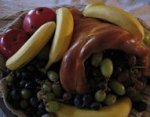
Wiki wiki wiki. Probably the most popular web2.0 tool around for the moment.
Wiki’s are expected to be able to solve every knowledge and information problem in the book.
But is this reality ?
A good post by Dorthe R. Jespersen from J. Boye pricks some of the balloons.
Myth #1: A wiki will heighten motivation and spark contributions.
Installing a wiki will not motivate employees to contribute new content.
A clear purpose must be communicated and new processes must be implemented to avoid the empty wiki syndrome.
Adding unauthorized content and re-editing each other’s contributions can be a major cultural hurdle.
Myth #2: Employees will know how to contribute
The wiki concept is simple, but it is not always that simple to use. Wiki interfaces are very basic and often require some html knowledge.
Wiki’s, being structured around links, are not so transparent as a book with a table of contents.
Users may struggle to find where and how to add new content. And if they do, they may break consistency and structure.
Myth #3: Wikis will always surface the information you need
Even with a good usage of a wiki, this is not a guarantee that :
– the content is updated
– the content is correct
– the content is not duplicated (contradictory)
– the content is present
– the content is findable
Conclusion : you need guidelines, processes and people for managing the information in the wiki.
Picture by Squirrel Cottage





![Reblog this post [with Zemanta]](https://i0.wp.com/img.zemanta.com/reblog_e.png)


